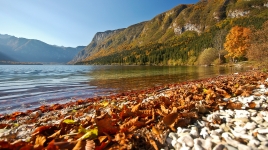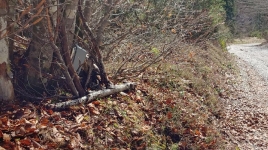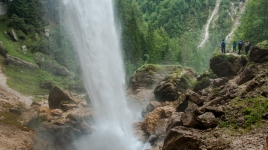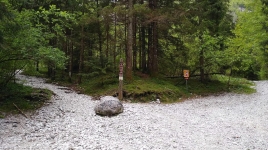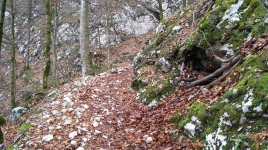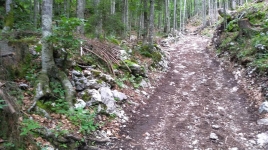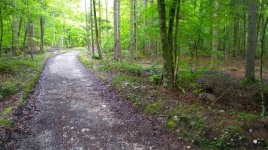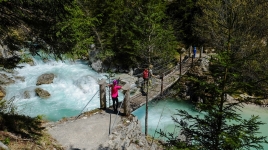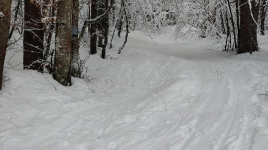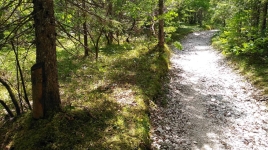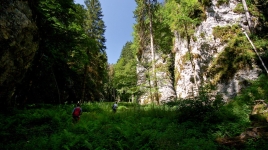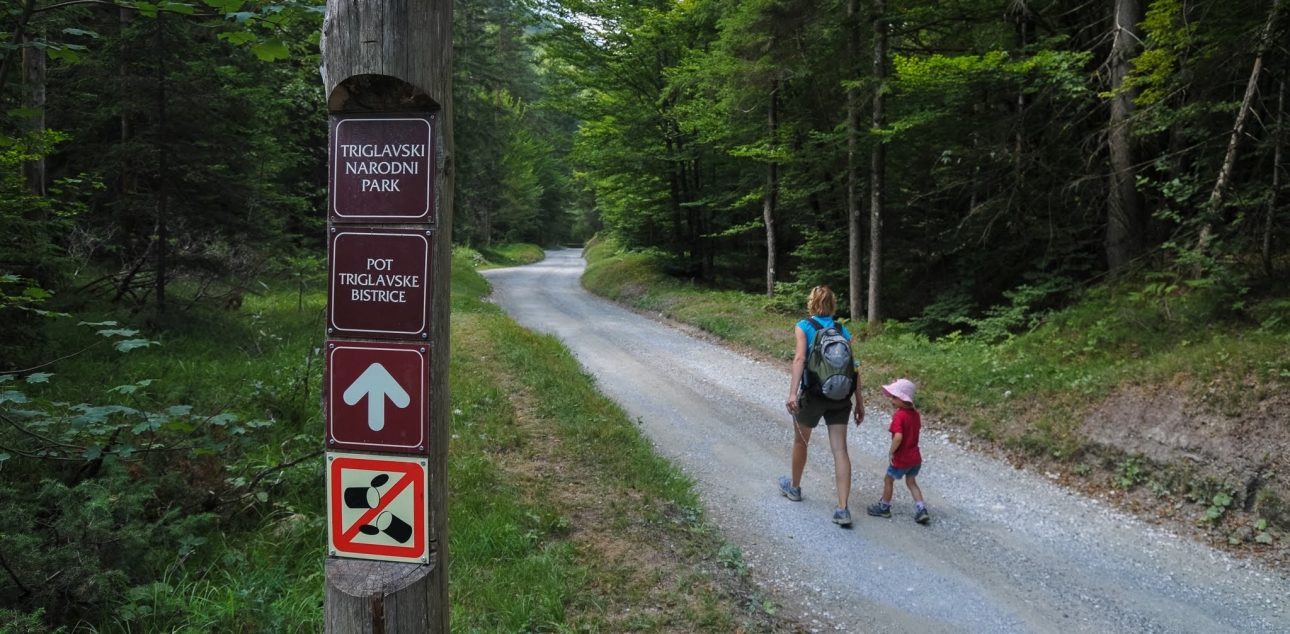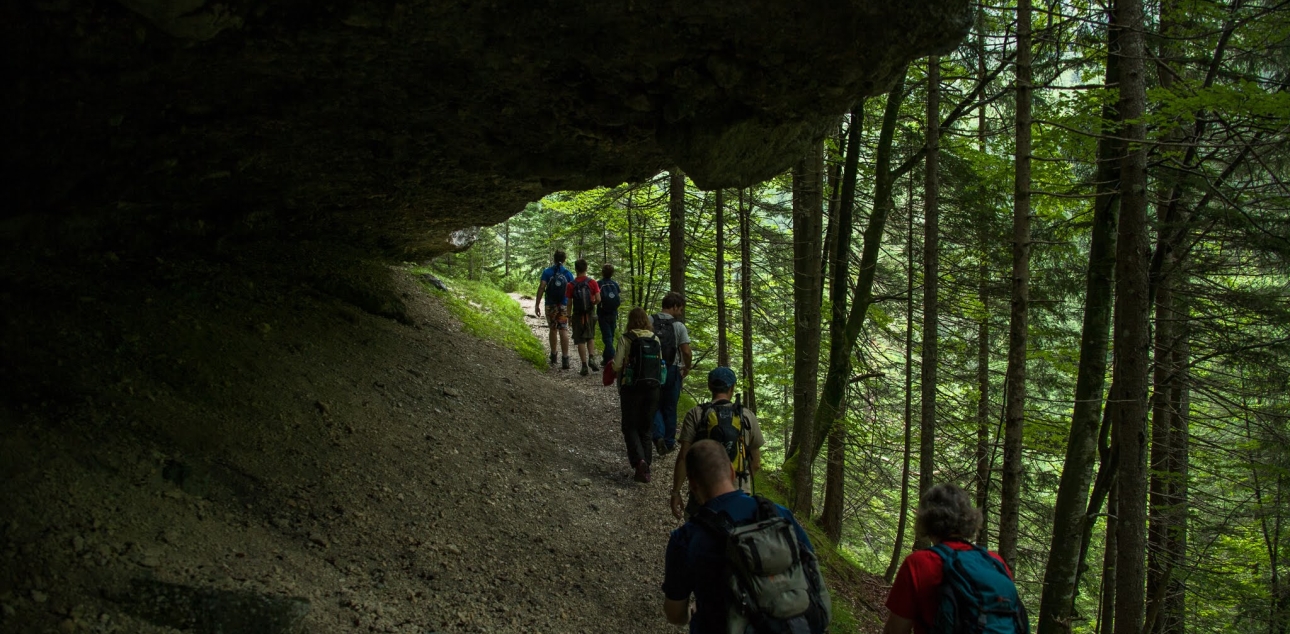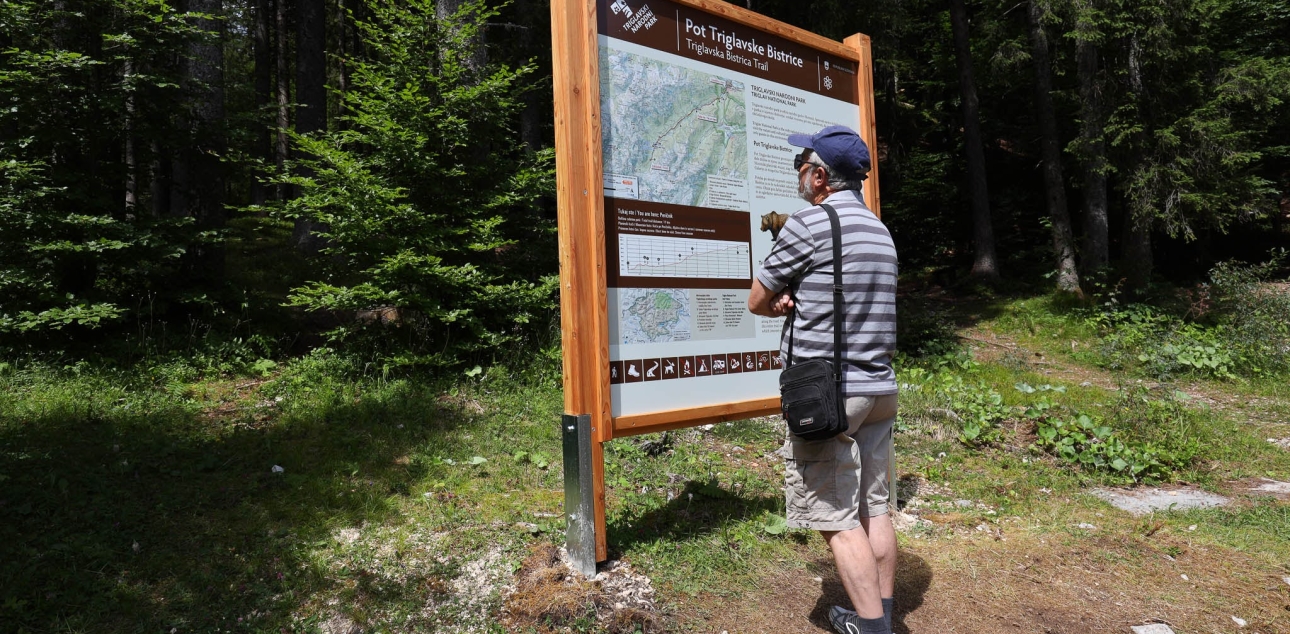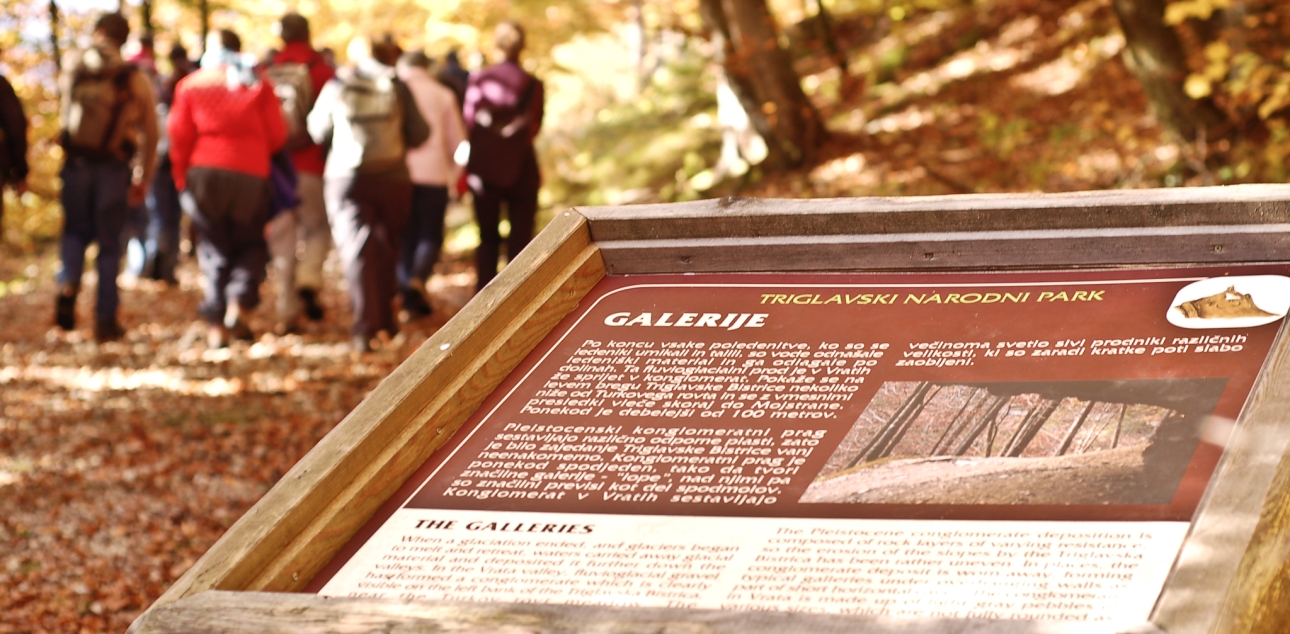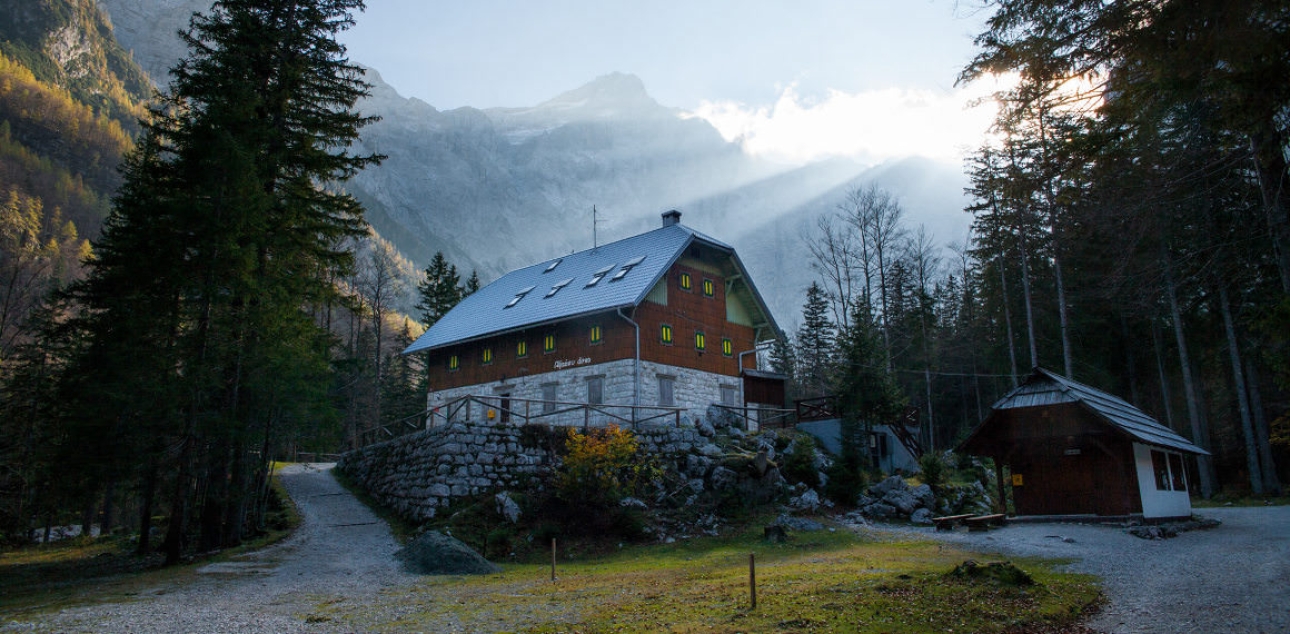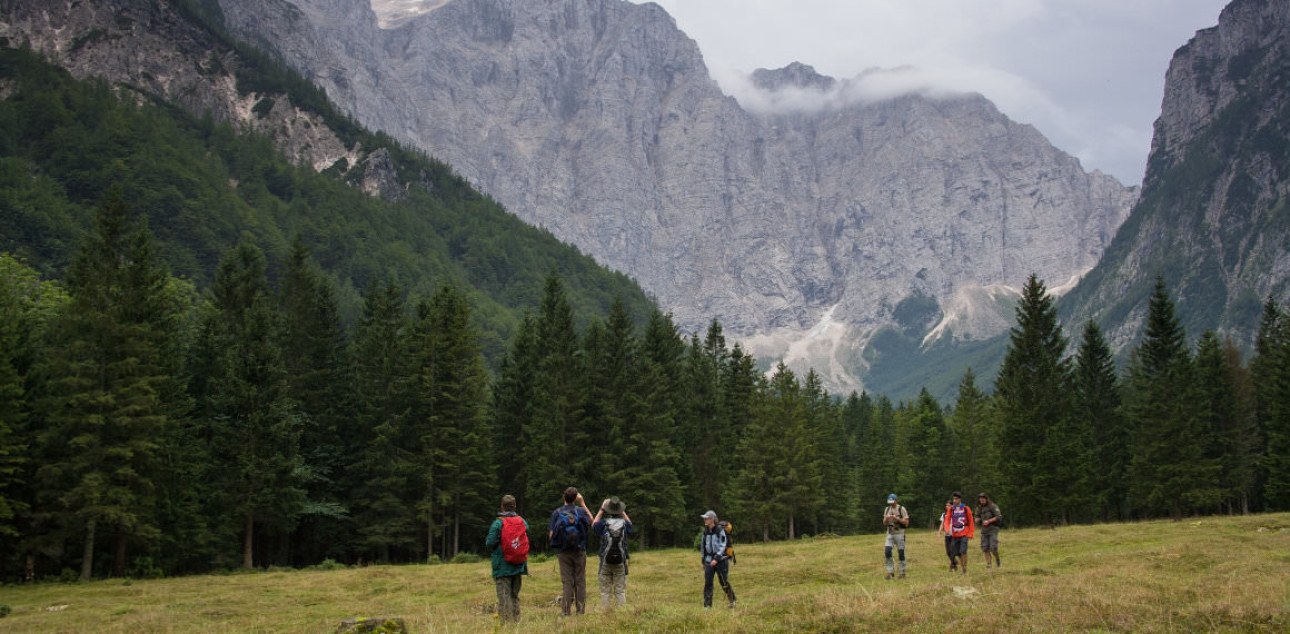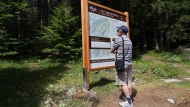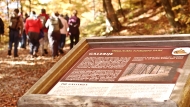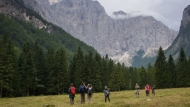You can reach starting point by using public transport. Your station to reach starting point is AP Mercator Mojstrana, from there walk to the The Slovenian Alpine Museum (Slovenski planinski muzej).
TIP: You can also use other stations and shorten the trail as desired.
Find out more about sustainable mobility in the park and beyond.
Data from visitor counters in the park

 Summer location / automatic station
Summer location / automatic station
 Winter location / automatic station
Winter location / automatic station
 Year-round location / automatic station
Year-round location / automatic stationThe route starts at the Slovenian Alpine Museum, where there is also an info point of the Triglav National Park. Continue along the river, Triglavska Bistrica Trail, where info points are waiting for you along the way. The trail passes the Peričnik waterfall and the Galleries all the way to the headwaters of the Vrat valley. There, the last info point on the way offers an insight into the history of mountaineering in the North Triglav Wall.
Guided tours:
- by prior arrangement
- Tel.: 04 5780 205,
- E-mail: info.trb@tnp.gov.si
Additional information
Route difficulty:
- Technically easy, but a lengthy route. It mostly follows paths and trails along the Triglavska Bistrica and only merges with the road in short sections.
Attractions along the way:
- Lake Kreda, Peričnik waterfall, conglomerate rocks - galleries, hilly meadows, picturesque Vrat valley with a view of the north face of Triglav.
The appropriate season:
- dry season
Payment of visit:
- free
Guest houses and mountain huts:
- Koča pri Peričniku, Aljažev dom (in summer season)
Priporočila:
- suitable hiking footwear
- In bad weather or winter conditions, the trail can be dangerous and difficult to walk.
Trail manager:
- Triglav National Park Public Institute
Walk along the Triglavska Bistrica
Slovenian Alpine Museum
A museum where the past meets the present. An extensive collection of items with diverse historical stories, rich photographic and archive material, and a comprehensive professional booklet give the visitor the chance to grasp the popularity and importance of mountaineering in the Slovenian territory. Explore the museum.
Lake Kreda
When a cement factory started operating in 1893 in the area of “Fabrka”, chalk (Slovene: kreda) for cement production was mined in the area nearby. When the mining ceased, the lake basin with water inflow from the brook became a small lake.
Triglavska Bistrica stream and birds
The Triglavska Bistrica stream is an important habitat for various animals, including birds. The whitethroated dipper, the grey and white wagtail, the European robin and the Eurasian wren are regular visitors on the stream bank. Higher in the rocks above the stream, we can find crag martins and wallcreepers.
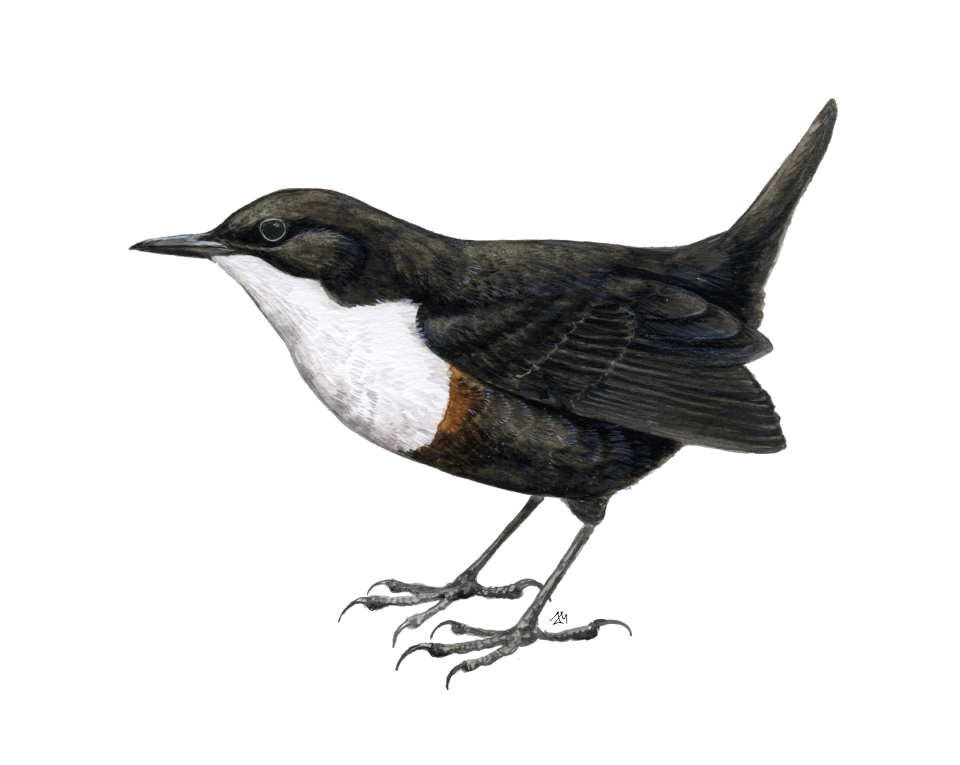
Cinclus cinclus
The wonderful world of plants
Living conditions in the high mountains are very difficult. Plants have adapted in many ways to long and cold winters, short summers, low temperatures, strong ultraviolet radiation, wind, water scarcity and shallow, nutrient-depleted soils. Some with intense flower colour and dwarf, cushion-like growth, others with fleshy or hairy leaves, others with embryonic buds.
Edelweiss
Leontopodium alpinum
In the 19th century, it became a symbol of Alpine flora and was severely threatened by ripping. It was the first protected plant in Slovenia. In Goriška, it was protected as early as 1896.

The diversity of the animal world
The Triglav National Park is rich in diversity, with a multitude of animal species from microscopically small to relatively large mammals found in the waters and on land. Within the Triglav National Park there are around 7000 different species. This diversity is due to climatic conditions, topography, geology and habitat diversity.
Chamois
Rupicapra rupicapra
It is the most characteristic animal of the Alpine world. They are social animals, with only older goats being solitary. The natural enemies of adult chamois are the wolf and the lynx, and the golden eagle also attacks young chamois.

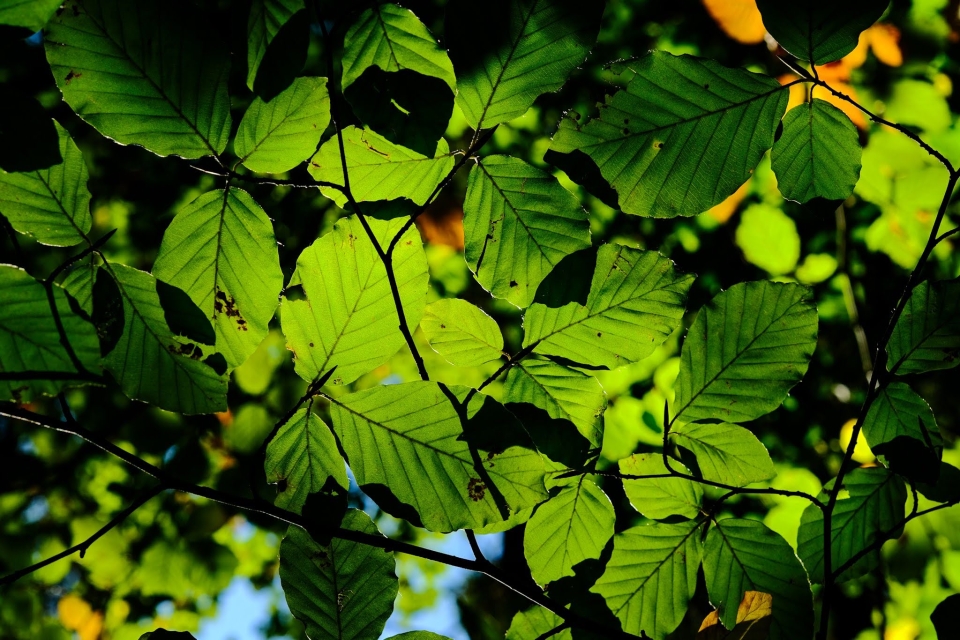
Alpine beech forest
The Alpine beech forest is a plant community typical of the lower slopes of Alpine valleys. The main tree species in the Alpine beech forest are beech, spruce, larch, fir and red pine. In the ground layer of the forest, the most common plants are common liverwort, spring heath, common cyclamen and black holly. In the Vrata valley, the common cowslip and the lily of the valley are also found.
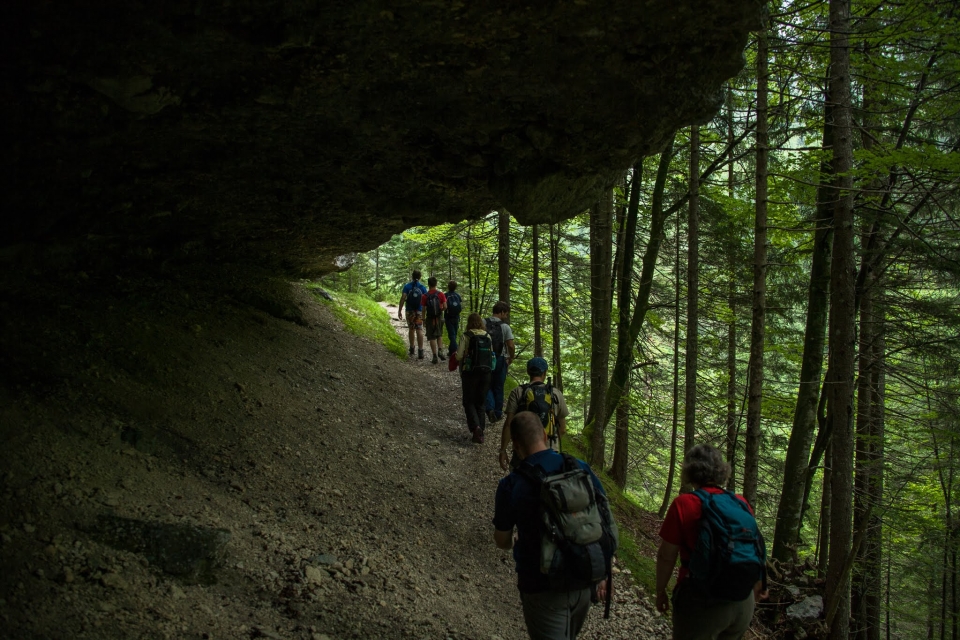
The galleries
The Pleistocene conglomerate sill, composed of differently resistant layers, was unevenly eroded by the Triglavska Bistrica stream. In some places it has been hollowed out to form picturesque galleries or 'sheds', with overhangs above them as part of the undercutting.
˝Rovti˝
In the Vrata valley, there are typical "rovtes" or grazing areas, which have their own names: the Šimencev rovt, the Cenkov rovt, the Poldov rovt, the Turkov rovt ... During the summer season, farmers graze their cattle there, thus making an important contribution to preserving the cultural landscape and biodiversity.


Jakob Aljaž and the Aljaž House in Vrata valley
Priest, composer, poet and builder of the huts in Vrata and Kredarica, the Aljaž Tower, the weather station and the chapel at Kredarica, and designer of many trails in the Julian Alps, including the Tominšek Route, which is known as the first Slovenian Route to Triglav.
Mountaineering
The most important milestones in the conquest of the North Triglav Wall were set by local climbers. Among the most important ascents are the climbed routes in Sfinga. Today, there are hundreds of climbing routes and variants across the Wall.


North Triglav Wall
The mighty North Triglav Wall reigns over the Vrata valley. It is more than three kilometres wide and on average 1000 metres high. It is one of the three largest walls in the Eastern Alps. The wall is a symbol of Slovenian mountaineering.
Geology
The North Triglav Wall is lined with numerous well-defined layers of varying thickness of Upper Triassic Dachstein limestone.The uplift of the Julian Alps has subjected the normal sequence to folding and uplift, so that today the older rocks lie on top of the younger ones. The top of Triglav (above Stena) is thus not made of layered limestone, but of older, massive Upper Triassic limestone.

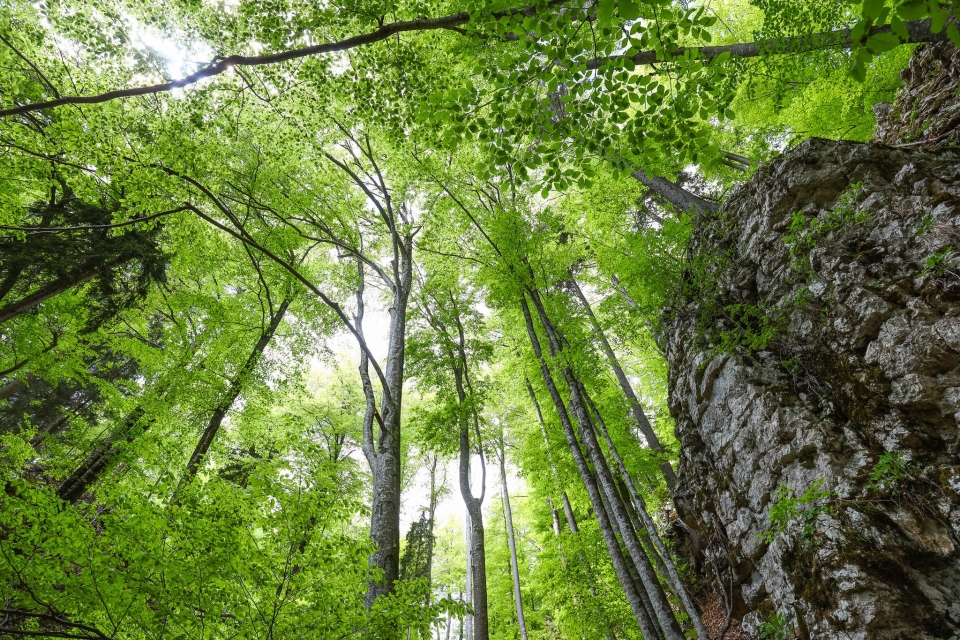
Protective forest
In protective forests, all actions are subordinated to maintaining and enhancing the protective function. Trees intercept part of the snowfall with their canopies and prevent the snow cover from moving with their trunks. They also stop falling stones.




